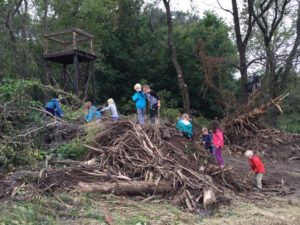And the Good News Is…
The media long ago learned that bad news is more profitable than good news. Murders, oil spills, and raging politicians rivet the public’s attention and helps sell more advertising space on screens and on paper. To get your daily dose of good news, you need to look elsewhere and think long term, including the slow but steady gains being made in the conservation arena.
For example, my blog “Proof That Core and Corridor Conservation Works: The Florida Panther” published in November, is a saga that began more than a half century ago and is still being improved today in small increments – a new map, a grant, a land purchase, a new employee, fewer panthers hit by cars – none of which will make nationwide headlines, but together usher in recovery of a species and many of its associates.
So following up on Paul Hawken’s big picture (see Welcoming the New Year) of our human story unfolding, here are a few snapshots of good news from the realm of conservation:
- The Xerces Society specializes in invertebrate conservation, especially insects. In their Fall 2019 magazine, page 11, they report that: “Xerces Society conservationists collaborate with farm communities across the country to undertake planting projects. More than a million acres of habitat have been created or restored.”
- There is growing recognition that young children especially benefit from regular immersion in nature, benefits including “personalized risk assessment and self-directed learning.” At least four local organizations currently offer this opportunity, including Taproot Nature Experience, Take a Kid Outdoors, School of the Wild, and Wild Things. For some specific details, see “Free Range Children.”

Free range children learn their way through an old brush pile, enjoying every moment.
- The ozone hole over Antarctica is finally beginning to close, following the 1989 ban on ozone-depleting chemicals (the Montreal Protocol). This demonstrates how nations cooperating can actually deal with global-scale problems.
- The undamming of Iowa rivers has finally begun, more details coming in a later blog.
- Over the past decade, Sibylla and Bill Brown have restored a degraded savanna in Decatur County, Iowa into 200 acres of incredible native diversity, using ordinary tools like fire and clearing alien brush. Several millions of acres in the rugged southern two tiers of Iowa counties have never been plowed, and also have this potential. How do we encourage this opportunity?
- Overall, the rate at which new cancer is being diagnosed in the USA is gradually declining at a rate of about ½% per year. For the past 30 years, our exposure to asbestos, lead, DDT, radioactive fallout, cigarette smoke, soot, etc. has also declined, and we strongly suspect a correlation here between clean environment and good health.
- Kirkland’s warbler has been delisted. This little bird breeds mainly in Michigan and winters in the Bahamas. Over a half century, with good management of the jack pine forests it needs, plus cowbird control, it increased from about 190 breeding pairs to about 2300. Cowbird control may no longer be needed and Michigan has committed to favorable forest management. This is more evidence that the Endangered Species Act works.
So why not start your own list of good news conservation items? It could help make your day to start building a collection. And share it with us!
Tags: conservation education, good news, habitat restoration, Lon Drake, species restoration

